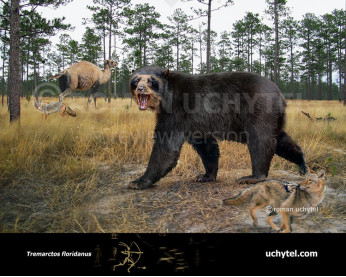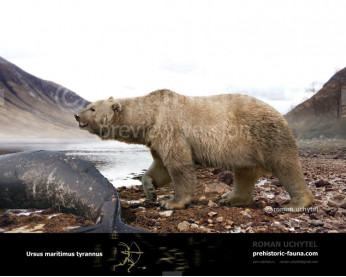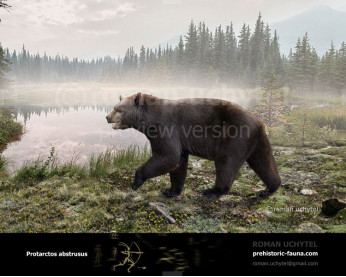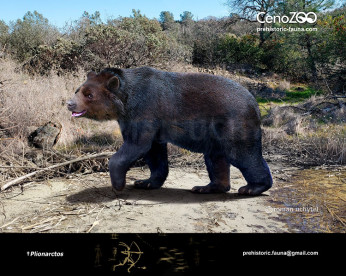Arctotherium wingei
512512
South American short-faced bear (Arctotherium wingei (Ameghino 1902))
Order: Carnivora
Family: Ursidae
Dimensions: length - 2 m, height - 120 сm, weight - <250 kg
Temporal range: during the Upper Pleistocene-Lower Holocene (known from northern South America)
A typical representative: Arctotherium wingei
Arctotherium is an extinct South American short-faced bears, closer genetically to the spectacled bear (Tremarctos ornatus), than to Arctodus of North America, implying the two extinct forms evolved large size in a convergent manner, perhaps to facilitate dominating other carnivores in the competition for the biggest carcasses.. Their ancestors migrated from North America to South America during the Great American Interchange, following the formation of the Isthmus of Panama during the late Pliocene. The northernmost species, A. wingei, known from Venezuela in South America, apparently invaded Central America and reached as far north as the Yucatán.
Оплата
У Вас є кілька зручних способів купівлі зображення: кредитна чи дебетова картка Visa, Mastercard, Maestro; PayPal або банківський переказ
South American short-faced bear (Arctotherium wingei (Ameghino 1902))
Order: Carnivora
Family: Ursidae
Dimensions: length - 2 m, height - 120 сm, weight - <250 kg
Temporal range: during the Upper Pleistocene-Lower Holocene (known from northern South America)
A typical representative: Arctotherium wingei
Arctotherium is an extinct South American short-faced bears, closer genetically to the spectacled bear (Tremarctos ornatus), than to Arctodus of North America, implying the two extinct forms evolved large size in a convergent manner, perhaps to facilitate dominating other carnivores in the competition for the biggest carcasses.. Their ancestors migrated from North America to South America during the Great American Interchange, following the formation of the Isthmus of Panama during the late Pliocene. The northernmost species, A. wingei, known from Venezuela in South America, apparently invaded Central America and reached as far north as the Yucatán.

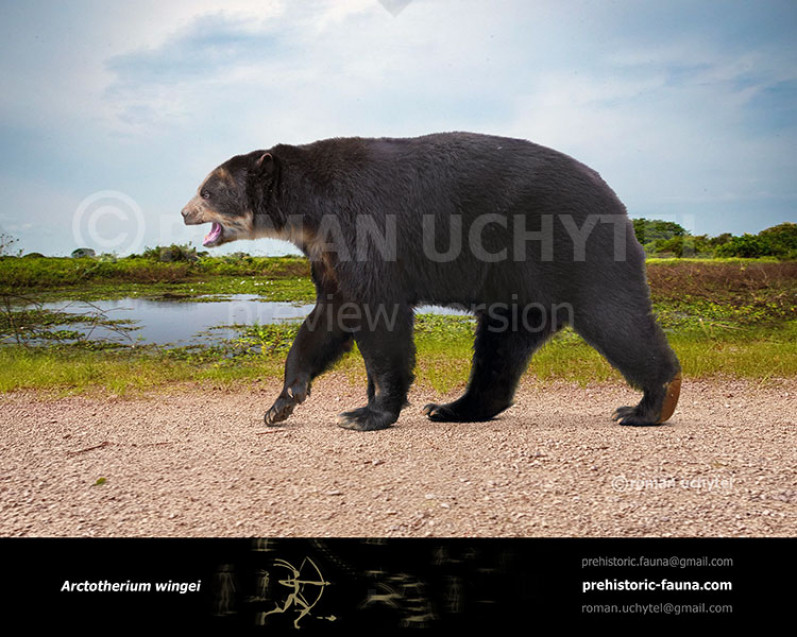
-797x638.jpg)
-797x638.jpg)

-70x56.jpg)
-70x56.jpg)
-346x277.jpg)
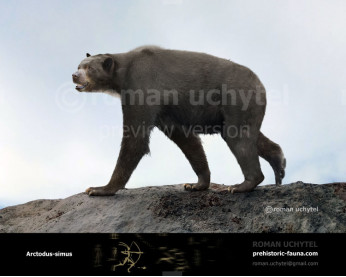
-346x277.jpg)
